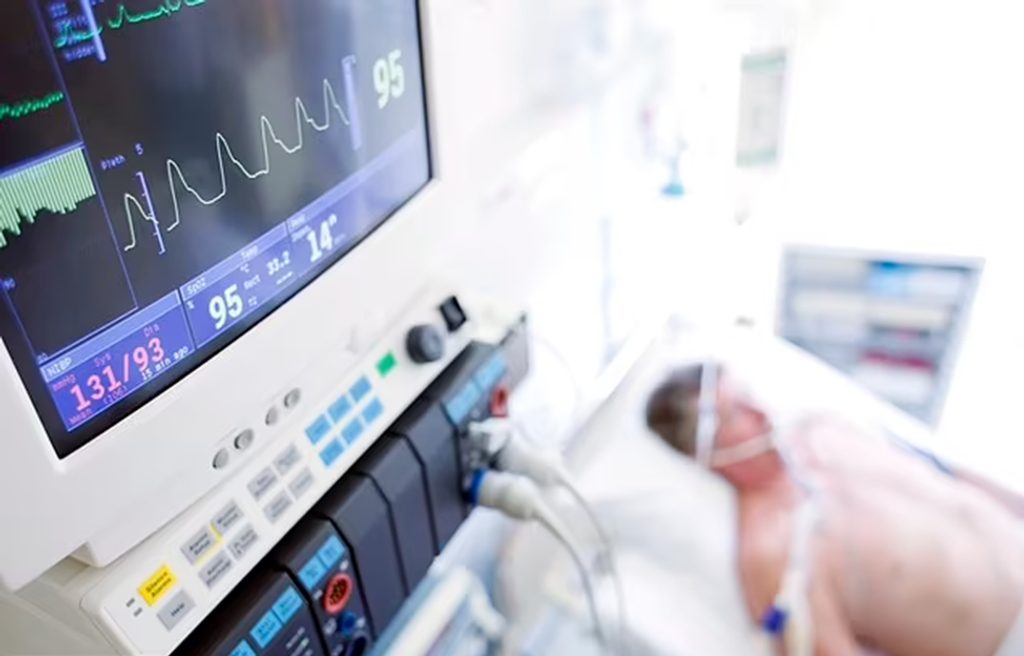- A 47-year-old father from Seattle was discovered unconscious in his hotel room following fentanyl inhalation.
- This incident marked his first encounter with the drug, and he had no prior medical history.
The man arrived unconscious and at death’s door.
Previously healthy and with no known medical issues, the 47-year-old was brought by ambulance to the emergency department at Oregon Health & Science University on February 25, 2023. He had been found collapsed in his hotel room while on a business trip. As clinicians began administering life-saving treatment, they searched for the underlying cause.
Diagnosis and the Dangers of Fentanyl
In a case report published in BMJ Case Reports, clinicians revealed a surprising and unprecedented diagnosis: toxic leukoencephalopathy caused by fentanyl inhalation.
Inhaling fentanyl had caused extensive inflammation in the patient’s brain’s white matter, leading to his unconscious state and putting him at risk of irreversible brain damage or even death.
While medical experts had previously documented similar cases involving heroin inhalation, the OHSU patient is believed to be the first known case linked to inhaling illicit fentanyl. The lead author of the study warns that this case highlights the severe danger of fentanyl, a substance that is inexpensive, widely accessible, and 50 times more potent than heroin.

A 47-year-old man almost died after inhaling fentanyl caused his brain to swell, in the first case of its kind linked to the deadly drug
“Opioid use, especially fentanyl, is heavily stigmatized,” said Dr. Chris Eden, the lead author and a second-year resident in internal medicine at the OHSU School of Medicine, who was part of the patient’s treatment team. “This case involves a middle-class man in his late 40s, with children, who used fentanyl for the first time. It shows that fentanyl can impact anyone in our society.”
Although this is the first documented case, Eden suggested that other instances likely went unrecognized due to limited knowledge about the syndrome’s physiology. Additionally, hospitals have not typically included fentanyl in standard urinalysis drug screens.
Meanwhile, both fatal and nonfatal overdoses from fentanyl and other opioids remain alarmingly common.
“We are well aware of the typical opiate side effects: respiratory depression, loss of consciousness, disorientation,” Eden noted. “However, we don’t usually associate opiates with causing potentially irreversible brain damage, as happened in this case.”
Magnetic resonance imaging revealed brain inflammation, but the patient’s prolonged unconsciousness, memory loss, and impaired function could have resulted from various causes, including stroke, carbon monoxide exposure, or metabolic disease. Ultimately, a nonstandard drug test detected fentanyl in his system.
Slow Recovery
Fortunately, the patient underwent a gradual recovery process spanning 26 days in the hospital, followed by a period at a skilled nursing facility to restore speech and function. He has since returned home to his family in Seattle and resumed his work routine. Remarkably, he has no recollection of the ordeal.
This positive outcome resulted from comprehensive treatment involving many healthcare professionals and support services at Oregon’s leading academic health center and largest hospital, all of which operate with a patient-centered approach.
“This case required collaboration among internal medicine, neurology, neuroradiology, and palliative care specialists, as well as the dedication of nurses, social workers, discharge planners, physical therapists, dieticians, and pharmacists,” Eden remarked. “I’m proud of the collaborative efforts of these multidisciplinary teams at OHSU, who worked together to provide holistic care to complex patients, addressing both medical and social aspects.”
Now residing with his family in the Seattle area and back on the job, he remains unable to recall the incident.
The latest publication of BMJ Case Reports features a firsthand account from the patient as well.
Reflecting on his journey, he considers his recovery nothing short of miraculous, stating, “In the initial stages, it seemed likely that I would require around-the-clock assistance post-discharge. However, I remained resolute, dedicating myself to rigorous therapy sessions, determined not to leave the hospital only to transition to a group facility for ongoing care.”
“I frequently find myself regretting the impact of my actions on myself, my wife, and my family,” he shared. “I’m deeply thankful to the doctors, nurses, and EMTs who played a pivotal role in saving my life, as well as the therapists who assisted me in reintegrating into society as a productive member.”
References
- OHSU patient is world’s first documented case of brain disease from fentanyl inhalation [Internet]. Accessed on May 16,2024. Available at: https://news.ohsu.edu/2024/04/29/ohsu-patient-is-worlds-first-documented-case-of-brain-disease-from-fentanyl-inhalation
- Doctors warn of deadly brain swelling from fentanyl as Seattle dad becomes first person to suffer condition after INHALING drug [Internet]. Accessed on May 16, 2024. Available at: https://www.dailymail.co.uk/health/article-13364227/deadly-brain-swelling-fentanyl-drug.html
About Docquity
If you need more confidence and insights to boost careers in healthcare, expanding the network to other healthcare professionals to practice peer-to-peer learning might be the answer. One way to do it is by joining a social platform for healthcare professionals, such as Docquity.
Docquity is an AI-based state-of-the-art private & secure continual learning network of verified doctors, bringing you real-time knowledge from thousands of doctors worldwide. Today, Docquity has over 400,000 doctors spread across six countries in Asia. Meet experts and trusted peers across Asia where you can safely discuss clinical cases, get up-to-date insights from webinars and research journals, and earn CME/CPD credits through certified courses from Docquity Academy. All with the ease of a mobile app available on Android & iOS platforms!






